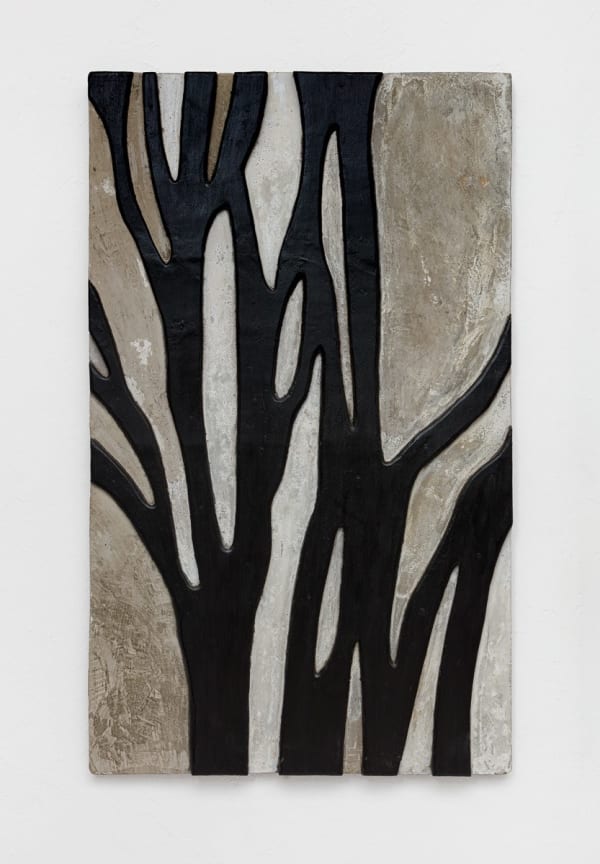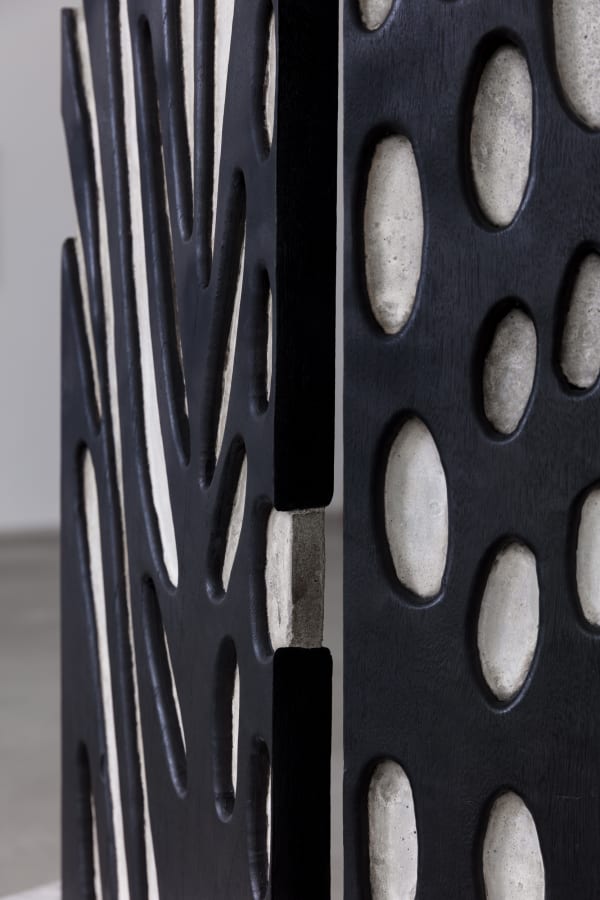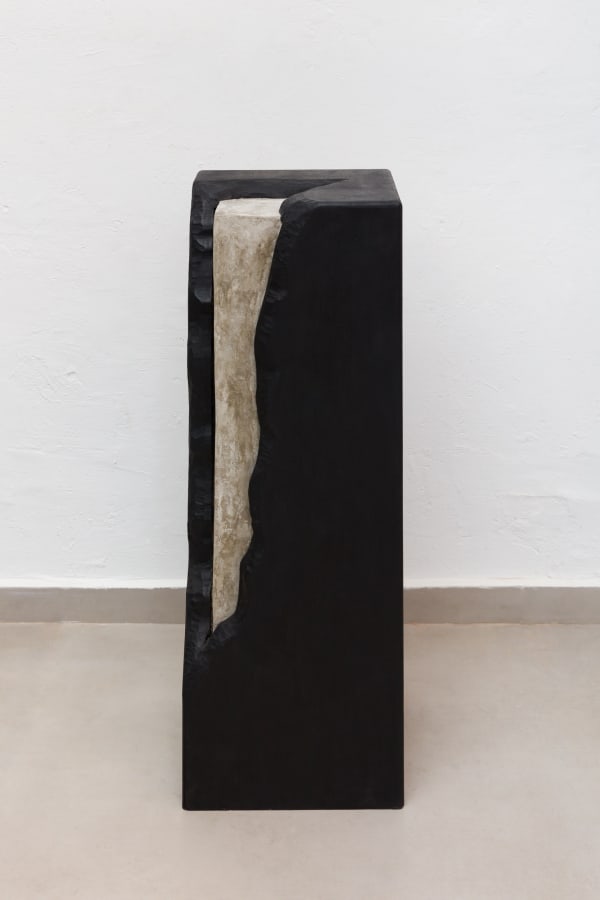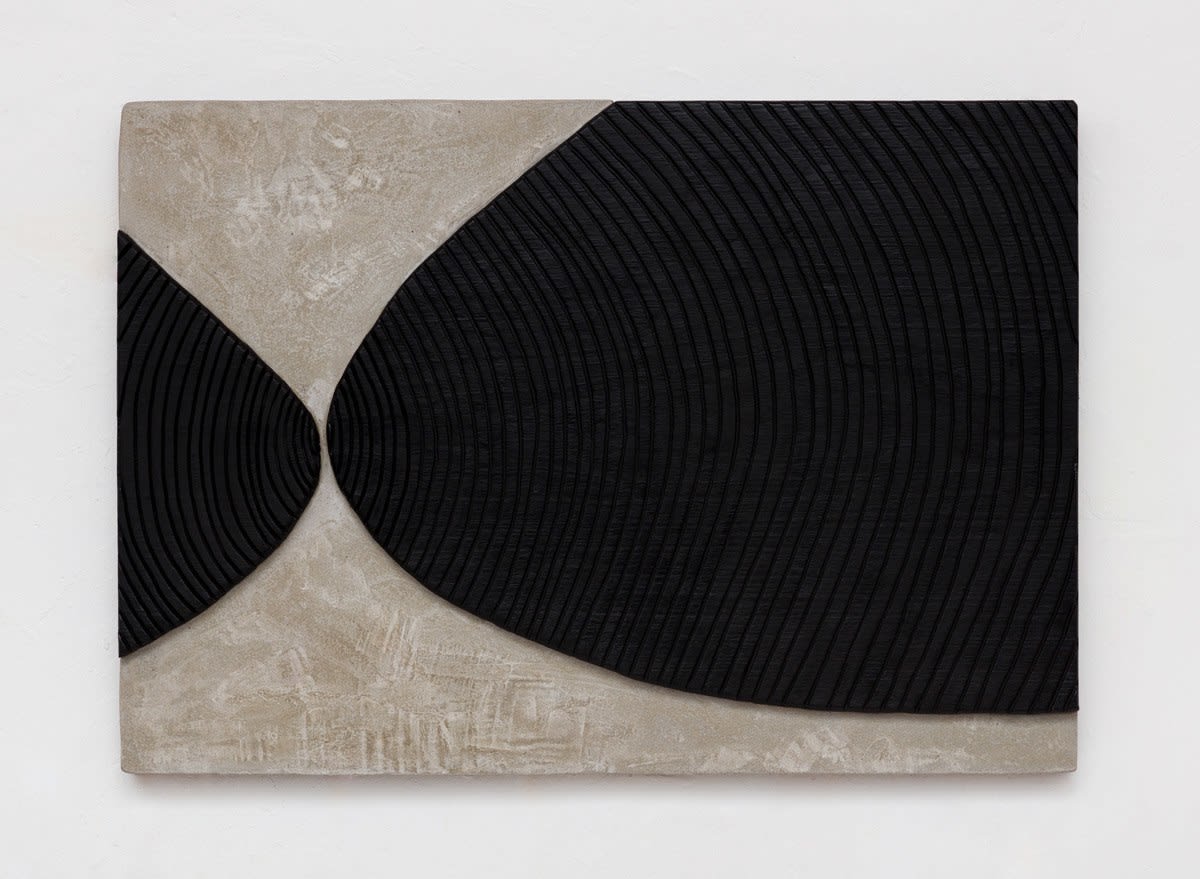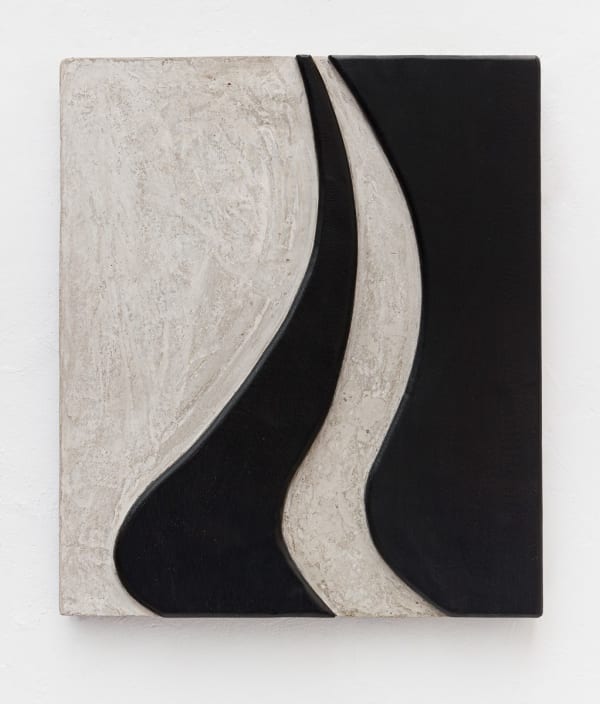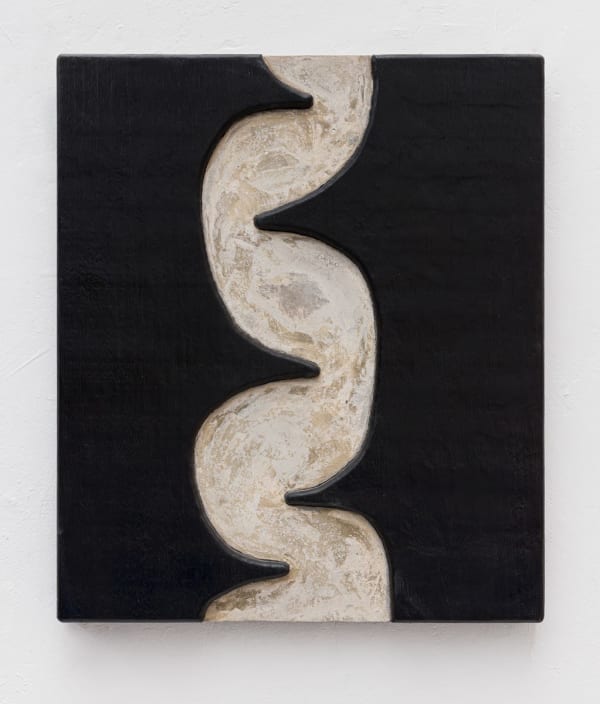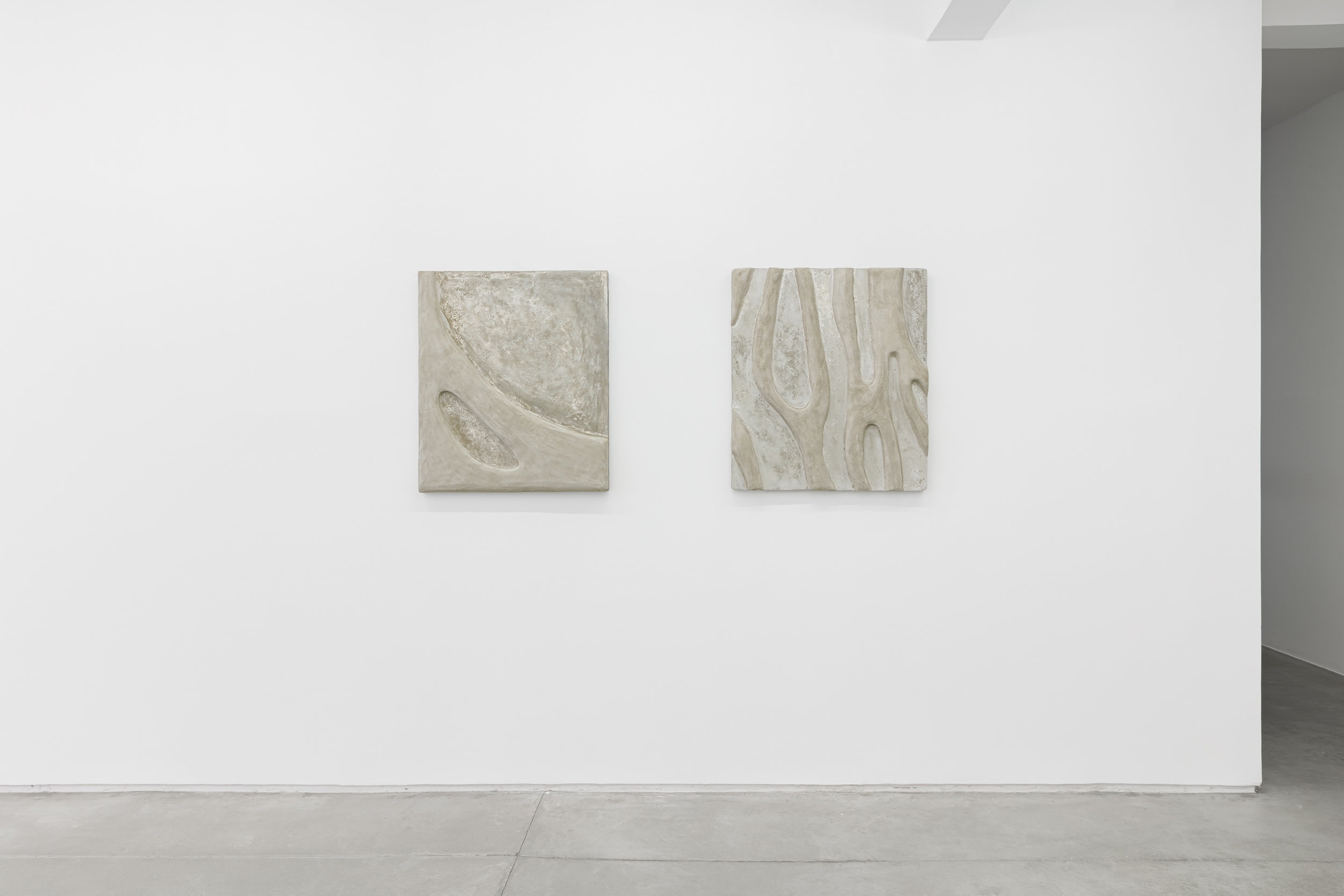-
Casa Triângulo is pleased to present the first solo exhibition of Marina Hachem at the gallery, with a critical essay by Victor Gorgulho.
Everything that is born is likewise everything that will die. At first, this seems to be the message whispered by this new group of works presented by artist Marina Hachem (São Paulo, 1993). Through an artistic practice that extends beyond the two-dimensional plane, Hachem creates works with a strong sculptural presence and intention.
At first glance, perhaps curiosity about the formal dimension is what initially attracts us to Marina Hachem's works. Through a distinctive process that starts at the pictorial plane – smooth, pristine and still virgin of meaning – Hachem combines the use of materials that at first seem disparate, unfamiliar with each other, but which then become something like alchemical pairs, perfectly matched materials.
-
-
The artist begins her ingenious process using woodworking machinery to reinforce what we mentioned above as an unequivocal and evident sculptural dimension of these works. By cutting and manipulating the wooden surfaces – akin to a method for drawing on this material – the artist sculpts forms that evoke an endless array of images derived from her own imagination or from photographic references and other sources.
The second stage unavoidably involves fire. By burning these sculpted wooden reliefs, the artist imbues them with robust black tones, which are then bathed in unconventional materials such as grease and wax, resulting in a polished finish with nearly startling highlights on the dark tones.
-
-
 Untitled, 2024
Untitled, 2024 -
 Encontro, 2024
Encontro, 2024 -
 Untitled, 2024
Untitled, 2024 -
-
Each viewer will see, in the poetic dimension of their gaze, forms that are radically different – roots or ruins, organic or architectural forms, riverbeds, as well as abstract paths in these works spread over the walls of the exhibition space.
At this more advanced moment, what was once a whisper gains considerable volume, echoing the intention of the two-dimensional forms to fully occupy the space in which we are walking and positioning the weight of our bodies.
-
-
This is revealed, for example, by the three sculptures located away from the walls, looking like fugitive creatures that have broken free from the smooth, white surfaces that surround us. Like rocks, they rest on the space with a brutal lightness, evidencing the great formal complexity achieved by the artist’s unique work process.
We no longer know – nor do we care – whether we are in a garden of fertile plants and surging waters or, perhaps, in a distant land of fossils and vestiges. We are experiencing another unsuspected place, one that is far away from here and yet very close – a possible territory: namely, the artist's natural habitat.
-

-

Viewing room



